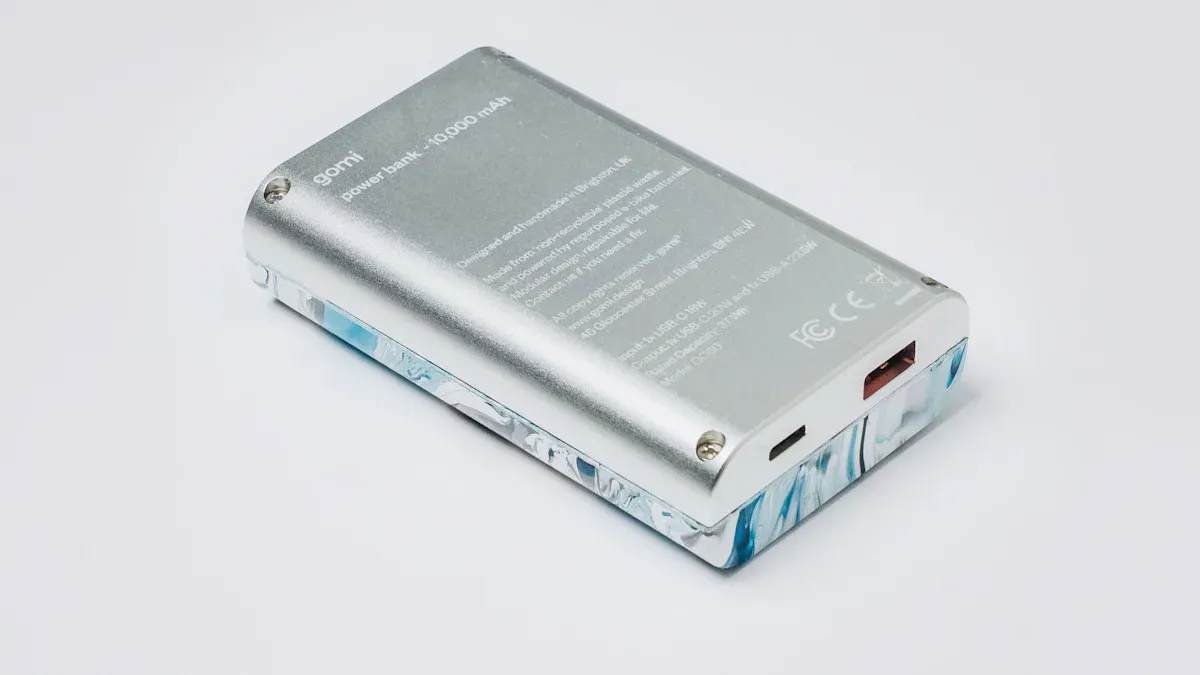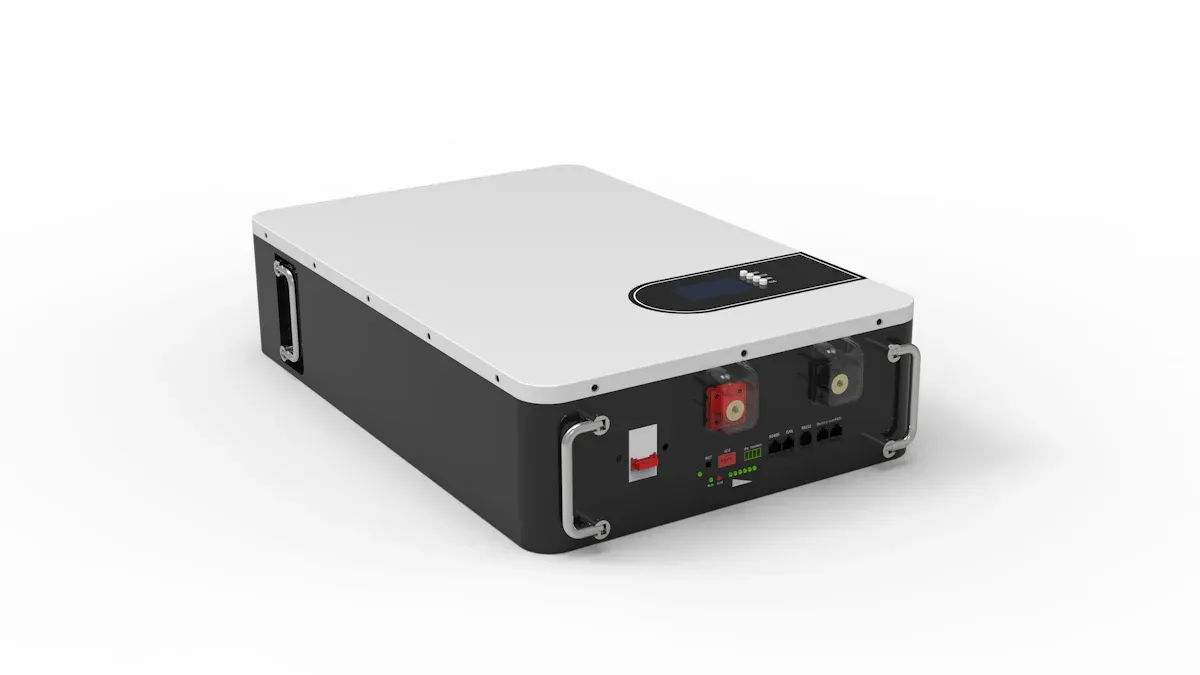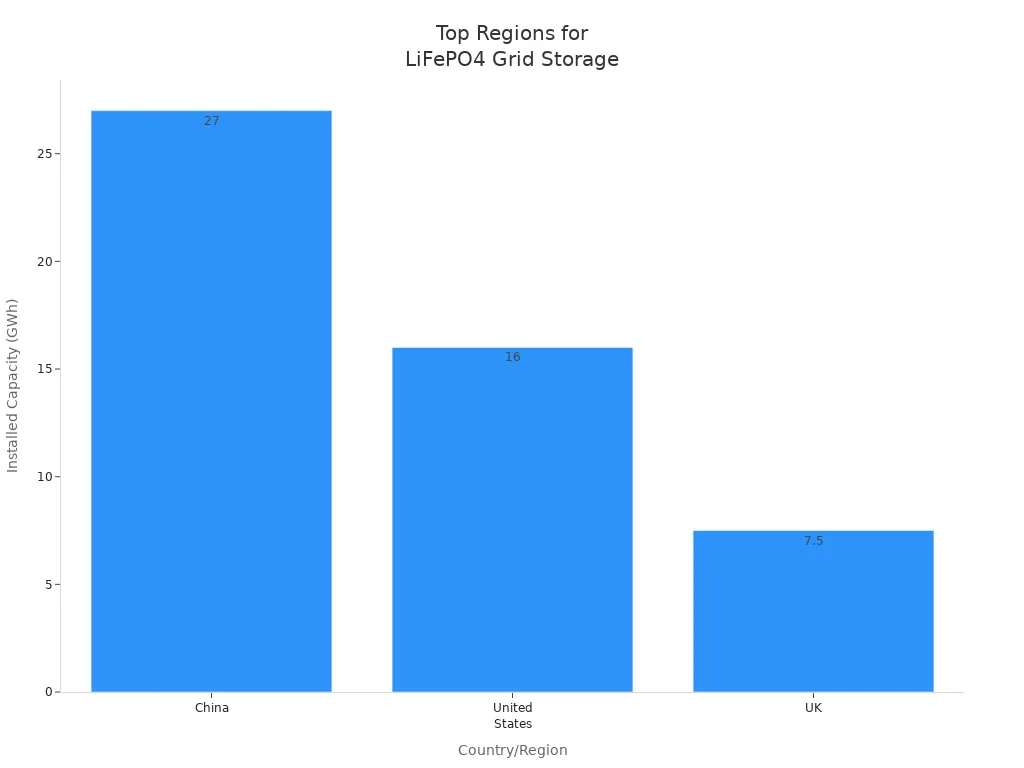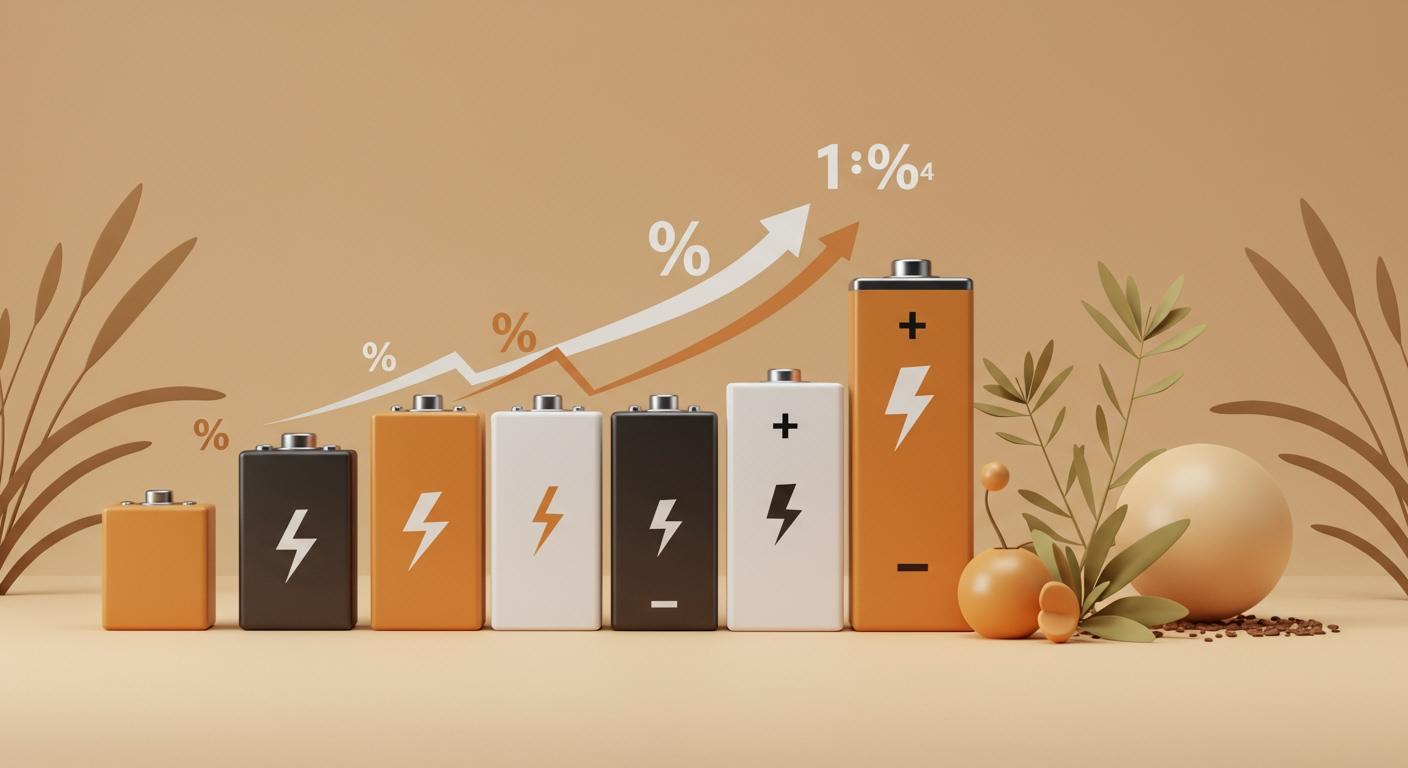Proportion of LiFePO4 batteries increased
You may notice the proportion of lifepo4 batteries rising rapidly in today’s market. Lithium iron phosphate batteries now stand out for their enhanced safety, improved energy density, and lower costs. Global electric car sales soared by 108% in 2021, which pushed demand for lifepo4 even higher. These batteries deliver strong stability at high temperatures and use non-toxic materials, making them a safer and greener choice for you.
| Factor | Description |
|---|---|
| Rising Demand for EVs | The adoption of electric vehicles is increasing due to government incentives and regulations promoting cleaner energy. |
| Need for Efficient Energy Storage | The shift towards renewable energy sources has heightened the demand for effective energy storage solutions. |
| Advancements in Battery Technology | Innovations in battery technology are enhancing the performance and cost-effectiveness of LiFePO4 batteries. |
| Government Incentives | Policies promoting clean energy solutions are driving the market for LiFePO4 batteries. |
Key Takeaways
- LiFePO4 batteries are gaining popularity due to their safety, cost-effectiveness, and improved energy density.
- These batteries excel in high-temperature stability, making them a safer choice for electric vehicles and energy storage.
- The market share of LiFePO4 batteries has surged, reaching 60% globally, driven by demand in electric vehicles and renewable energy storage.
- Lower manufacturing costs and longer lifespans make LiFePO4 batteries a smart investment for consumers and businesses.
- Innovations in battery technology promise to enhance the performance and reliability of LiFePO4 batteries in the future.
Technical Advantages of Lithium Iron Phosphate Batteries
Safety Features
You can trust lithium iron phosphate batteries for their outstanding safety features. These batteries use a unique chemical composition that makes them more stable than other lithium-ion types. The phosphate material in the cathode helps prevent dangerous reactions, even when the battery faces stress or high temperatures. This stability means you do not have to worry about sudden fires or explosions.
Here is a table that shows what sets lithium iron phosphate batteries apart in terms of safety:
| Safety Feature | Description |
|---|---|
| Unique Chemical Composition | Uses phosphate, which enhances stability and reduces thermal runaway risks. |
| Stability During Charge Cycles | Maintains structure and stability, even during malfunctions. |
| Strength of Bonds | Iron phosphate-oxide bonds are stronger than cobalt oxide bonds, improving safety under stress. |
| Incombustibility | Incombustible, so charging and discharging remain safe. |
| Environmental Durability | Withstands extreme conditions, making it reliable in real-world use. |
You will also notice that lfp batteries show higher thermal stability than NMC and NCA batteries. LFP batteries can handle temperatures up to 250–270°C before thermal runaway starts, while NMC batteries may fail at 180–210°C. LFP batteries release less heat and oxygen during abuse, which keeps flames and heat release rates lower. This makes lithium iron phosphate batteries a safer choice for your home, car, or business.
Energy Density
Lithium iron phosphate batteries have made big improvements in energy density over the years. Early versions of lfp batteries offered around 100 Wh/kg, but now you can find models with energy densities from 90 to 230 Wh/kg. This range puts them close to NMC batteries, which usually have 150 to 220 Wh/kg. While NMC batteries still lead in energy density, the gap has narrowed.
| Battery Chemistry | Energy Density (Wh/kg) | Volumetric Energy Density (Wh/l) |
|---|---|---|
| LiFePO4 (LFP) | 90 to 230 | 384 |
| NMC | 150 to 220 | N/A |
You might notice that lfp batteries do not always match the highest energy density of NMC batteries. However, you gain other benefits, such as longer cycle life and better safety. For many users, especially in electric vehicles and energy storage, this trade-off makes sense. You get a battery that lasts longer and keeps you safer, even if it is a bit heavier or larger.
Cost Benefits
Lithium iron phosphate batteries offer you clear cost advantages. You pay less upfront because these batteries do not use expensive materials like nickel, manganese, or cobalt. Manufacturing costs for lfp batteries are lower, which means you save money when you buy them.
| Battery Type | Energy Density (Wh/kg) | Cost Advantages |
|---|---|---|
| LiFePO4 (LFP) | 130-140 | Lower manufacturing costs due to no expensive materials |
| Ternary Lithium (NMC) | 160 | Higher energy density but higher material costs |
You also save money over time. LFP batteries last longer than NMC and NCA batteries, so you do not need to replace them as often. Maintenance costs are lower compared to lead-acid batteries. In fact, NMC batteries can cost 30% to 50% more than lithium iron phosphate batteries. This makes lfp a smart choice if you want to reduce both your initial investment and your long-term expenses.
Tip: If you want a battery that balances safety, lifespan, and cost, lithium iron phosphate batteries give you a reliable and affordable solution.
Market Share and Proportion of LiFePO4 Batteries

Recent Growth Trends
You can see the market for lithium iron phosphate batteries expanding at a rapid pace. Over the past few years, the proportion of these batteries in electric vehicles and energy storage systems has grown sharply. By the end of 2022, lithium iron phosphate batteries reached a 60% market share in the global battery market. This number shows a significant jump from previous years, when other chemistries dominated.
Manufacturers have introduced more models using LFP batteries. In fact, 61.9% of new battery-powered models now use LFP technology. This shift reflects your growing preference for safer, longer-lasting, and more affordable batteries. The number of models with LFP batteries continues to rise each month, showing strong momentum.
You may notice that the Asia-Pacific region leads this growth. The region accounted for 32.8% of the LiFePO4 battery market share in 2021. Several factors drive this trend:
- The Asia-Pacific region has an established automotive sector and a large consumer electronics market.
- Advanced manufacturing capabilities support high-volume production of LFP batteries.
- A strong focus on sustainability and energy efficiency encourages adoption.
- Europe is also catching up, with increased demand for LFP batteries as the region transitions to electric vehicles and pursues decarbonization goals.
Note: The rapid growth in both Asia-Pacific and Europe signals a global shift toward LFP batteries for cleaner and safer energy solutions.
Installed Capacity Data
Installed capacity gives you a clear picture of how much LFP battery technology has penetrated the market. By the end of 2022, LFP batteries accounted for 69.3% of total installed battery capacity worldwide. This figure marks a dramatic increase compared to previous years, when LFP batteries held a much smaller share.
You can track the year-over-year and month-over-month growth rates to see how quickly the market is changing. For example, the installed capacity of LFP batteries grew by over 40% year-over-year in 2022. Each month, more manufacturers and automakers choose LFP batteries for new models, pushing the numbers even higher.
Here is a table that summarizes the latest market share and installed capacity data:
| Metric | Value (End of 2022) |
|---|---|
| Proportion of models using LFP | 61.9% |
| Global market share of LFP batteries | 60% |
| Installed capacity share (LFP) | 69.3% |
You can see that LFP batteries now dominate the market in both the number of models and total installed capacity. This trend shows no sign of slowing down, as more companies recognize the benefits of lithium iron phosphate batteries for safety, cost, and performance.
Adoption of LFP Batteries in EVs and Energy Storage

EV Market
You see lfp batteries changing the landscape of the EV market. Over the past five years, the adoption rate of lfp in ev batteries has grown quickly. Automakers now choose lfp batteries for their affordability, long cycle life, and strong safety features. These batteries work especially well in entry-level evs and electric buses, where cost and reliability matter most.
- In February 2023, lfp batteries made up about 69.3% of the total installed capacity in new evs, reaching 15.2GWh out of 21.9GWh.
- The adoption rate of lfp batteries in the ev market has increased every year.
- The automotive industry stands as the largest user of lfp batteries.
- You benefit from innovations in battery technology, which make lfp batteries more appealing.
- Government incentives and the push for sustainable transportation drive this growth.
You notice that the market for ev batteries is projected to grow at a compound annual growth rate of around 20% over the next five years. This rapid growth means you will see more electric vehicles powered by lfp batteries on the road. The Asia-Pacific region leads in adoption, but Europe and North America are catching up as demand for clean transportation rises.
Tip: If you want an ev that is safe, affordable, and long-lasting, look for models with lfp batteries.
Energy Storage
You also see lfp batteries making a big impact in the energy storage industry. The shift to renewable energy sources, such as solar and wind, increases the need for reliable battery storage. LFP batteries offer the stability and safety you need for both home and grid-scale systems.
| Driver | Description |
|---|---|
| Green Energy Solutions | Growing focus on moving from fossil fuels to renewable energy sources. |
| Government Regulations | Strict laws worldwide to cut carbon emissions, boosting demand for energy storage devices. |
| Electric Vehicle Demand | EV sales rose by 19% in Q2 2024, increasing the need for lfp batteries in storage systems. |
Countries like China, the United States, the UK, Australia, and Chile lead in deploying lfp batteries for grid-scale energy storage. China stands out with about 27 GWh of installed capacity, followed by the United States with 16 GWh and the UK with 7.5 GWh.

China’s proactive policies, such as mandatory energy storage requirements, have helped boost the market. You can expect more countries to follow this example as the need for clean, reliable energy grows.
Comparison with Other Battery Types
LiFePO4 vs. NMC/NCA
When you compare lfp batteries to NMC and NCA batteries, you notice some clear differences. LFP batteries give you better safety, especially in high-temperature environments. You do not have to worry as much about overheating or fire risks. NMC and NCA batteries offer higher energy density, so they store more energy in a smaller space. However, they come with higher battery prices and more safety concerns.
Here is a table to help you see the main differences:
| Characteristic | LiFePO4 Batteries | NMC/NCA Batteries |
|---|---|---|
| Safety | Good safety in high temperatures | Safety concerns under extreme conditions |
| Cost | Lower manufacturing costs | Higher manufacturing costs |
| Energy Density | Relatively low | High |
| Charging Speed | Slower | Faster |
If you want a battery that keeps you safe and saves you money, lfp batteries are a strong choice. If you need the highest energy density for a compact device, NMC or NCA batteries might fit better.
LiFePO4 vs. Lead-Acid
You may wonder how lfp batteries compare to traditional lead-acid batteries. LFP batteries last much longer and have a smaller impact on the environment. Lead-acid batteries contain hazardous materials and need careful disposal. LFP batteries do not use toxic heavy metals, so they are more eco-friendly.
| Battery Type | Cycle Life (Cycles) | Environmental Impact |
|---|---|---|
| LiFePO4 | >2000 | More eco-friendly, no toxic heavy metals |
| Lead-Acid | 300-500 | Contains hazardous materials, needs careful disposal |
You get more value from lfp batteries because they last longer and help protect the environment.
Pros and Cons
Every battery type has strengths and weaknesses. You should weigh these before making a choice.
| Feature | LiFePO4 Batteries | Other Lithium-Ion Batteries |
|---|---|---|
| Composition | Uses lithium iron phosphate as cathode | Uses cobalt, manganese, or nickel oxide |
| Energy Density | Lower | Higher |
| Safety | Generally safer, less prone to overheating | More prone to overheating and fire risk |
| Cost | Less expensive to produce | Higher production costs |
| Performance | Good, varies by design | Good, varies by design |
Tip: If you want a battery with long life, good safety, and lower battery prices, lfp batteries are a smart pick. For higher energy needs, you may consider other lithium-ion options.
Manufacturing and Supply Chain Factors
Raw Materials
You benefit from lfp batteries because they use raw materials that are both affordable and widely available. The main ingredients in these batteries are lithium, iron, and phosphate. These materials cost less than the nickel and cobalt found in NMC and NCA batteries. You also avoid the risks linked to unsustainable mining practices. This makes lfp battery prices more stable and less likely to spike due to shortages.
| Battery Type | Primary Raw Materials | Cost Comparison | Availability Comparison |
|---|---|---|---|
| LiFePO4 (LFP) | Lithium, Iron, Phosphate | Cheaper due to no nickel and cobalt | More sustainable and widely available |
| NMC | Nickel, Manganese, Cobalt | More expensive due to nickel, cobalt | Limited by unsustainable mining |
| NCA | Nickel, Cobalt, Aluminium | More expensive than LFP | Shorter life cycle, limited materials |
You see that lfp batteries offer a clear advantage in both cost and supply security. This helps keep battery prices lower for you and supports long-term growth.
Scalability
You want a battery that can scale up to meet growing demand. Lfp battery manufacturing supports this need. These batteries weigh less and charge faster than older types like lead-acid. You get a longer cycle life, which means you replace batteries less often. The main challenge comes from the need for advanced processes and new infrastructure. As more factories invest in lfp technology, you will see production increase and battery prices drop.
| Aspect | LiFePO4 Batteries | Other Battery Types (e.g., Lead-Acid) |
|---|---|---|
| Weight | Lighter | Heavier |
| Charging Speed | Charges faster | Slower |
| Lifespan | Longer cycle life | Shorter cycle life |
| Upfront Cost | High upfront cost | Generally lower upfront cost |
| Manufacturing Bottlenecks | Advanced processes, raw material sourcing | Fewer advanced processes |
| Infrastructure Needs | Needs development for large-scale production | Less complex infrastructure needed |
You notice that lfp batteries require more investment at first, but you gain savings over time due to their long cycle life and lower replacement needs.
Environmental Impact
You care about the environment, and lfp batteries help you make a positive impact. These batteries use materials that are less toxic and easier to recycle. You avoid the heavy metals found in other battery types. The longer cycle life of lfp batteries means fewer batteries end up in landfills. You also reduce your carbon footprint because lfp battery production relies on more sustainable resources.
Note: Choosing lfp batteries supports a cleaner planet and helps you meet your sustainability goals.
Future Outlook for LiFePO4 Batteries
Market Projections
You will see the lfp market continue to grow over the next decade. The global lithium iron phosphate battery market reached about $8.25 billion in 2023. Experts expect it to reach $17.48 billion by 2030. This means the market will grow at a rate of 10.5% each year from 2024 to 2030. Some reports even predict an annual growth rate of 18.2%. The installed lithium iron phosphate capacity is set to surpass 60% by 2024. By 2025, lfp batteries could make up 45% of the global battery market. The electric vehicle industry and energy storage sectors will drive much of this demand.
- The lfp market is expanding quickly.
- Battery prices are becoming more competitive.
- The electric vehicle industry relies more on lfp batteries each year.
Innovations
You can expect many new technologies to improve lfp batteries soon. Companies are working on graphene additives and high-conductivity materials. These changes help lithium ions move faster and boost electrochemical performance. Advanced electrolyte formulas will make lfp batteries work better in cold weather. You will also see longer lifespans, faster charging, and higher energy density. AI and machine learning will help with predictive maintenance and real-time monitoring. These innovations will make lfp batteries safer and more reliable for your ev or energy storage system.
- Graphene and new materials increase performance.
- AI tools improve battery safety and lifespan.
- Better electrolytes help in extreme temperatures.
Challenges
You may face some challenges as lfp batteries become more common. Technical issues like energy density and temperature sensitivity still exist. Manufacturing costs and supply chain disruptions can slow production. Geopolitical tensions and trade disputes make it harder to get raw materials. Battery prices may rise if these problems continue. Many people do not know the benefits of lfp batteries, which slows adoption in the ev and energy storage markets. Companies now focus on building more sustainable and self-sufficient supply chains to reduce risks.
Note: You should watch for changes in supply chains and new technology as the lfp market grows.
You see several factors driving the rise of optional lithium iron phosphate batteries in the market:
- Performance improvements and cost advantages make these batteries a top choice.
- Enhanced safety and long cycle life offer you reliability and peace of mind.
- Lower greenhouse gas emissions support your environmental goals.
The battery industry now benefits from growing demand in electric vehicles and energy storage. As electric vehicle battery prices become more competitive, you can expect broader adoption. Watch for trends like price reductions, new applications, and better safety standards in the future.
| Trend | What to Watch For |
|---|---|
| Price Reduction | Lower costs from large-scale production |
| Application Expansion | Use in micro-grids and data centers |
| Safety Improvements | Stricter standards and new designs |
-

 May.2025.11.24Ternary Lithium Battery vs Lithium-ion: Complete Comparison Guide (2025 Edition)Learn More
May.2025.11.24Ternary Lithium Battery vs Lithium-ion: Complete Comparison Guide (2025 Edition)Learn More -

 May.2025.11.214S2P 18650 14.8V Battery: Complete Technical Guide, Specs, Applications & SafetyLearn More
May.2025.11.214S2P 18650 14.8V Battery: Complete Technical Guide, Specs, Applications & SafetyLearn More -

 May.2025.11.18PCM vs BMS in Lithium Batteries: What’s the Difference and Which One Do You Need?Learn More
May.2025.11.18PCM vs BMS in Lithium Batteries: What’s the Difference and Which One Do You Need?Learn More -

 May.2025.11.17Custom Li-ion Battery Design for Medical Devices (2025 Comprehensive Guide)Learn More
May.2025.11.17Custom Li-ion Battery Design for Medical Devices (2025 Comprehensive Guide)Learn More -

 May.2025.11.17The Future of Lithium-Ion Batteries: Innovation, Sustainability, and Global Market TrendsLearn More
May.2025.11.17The Future of Lithium-Ion Batteries: Innovation, Sustainability, and Global Market TrendsLearn More
















